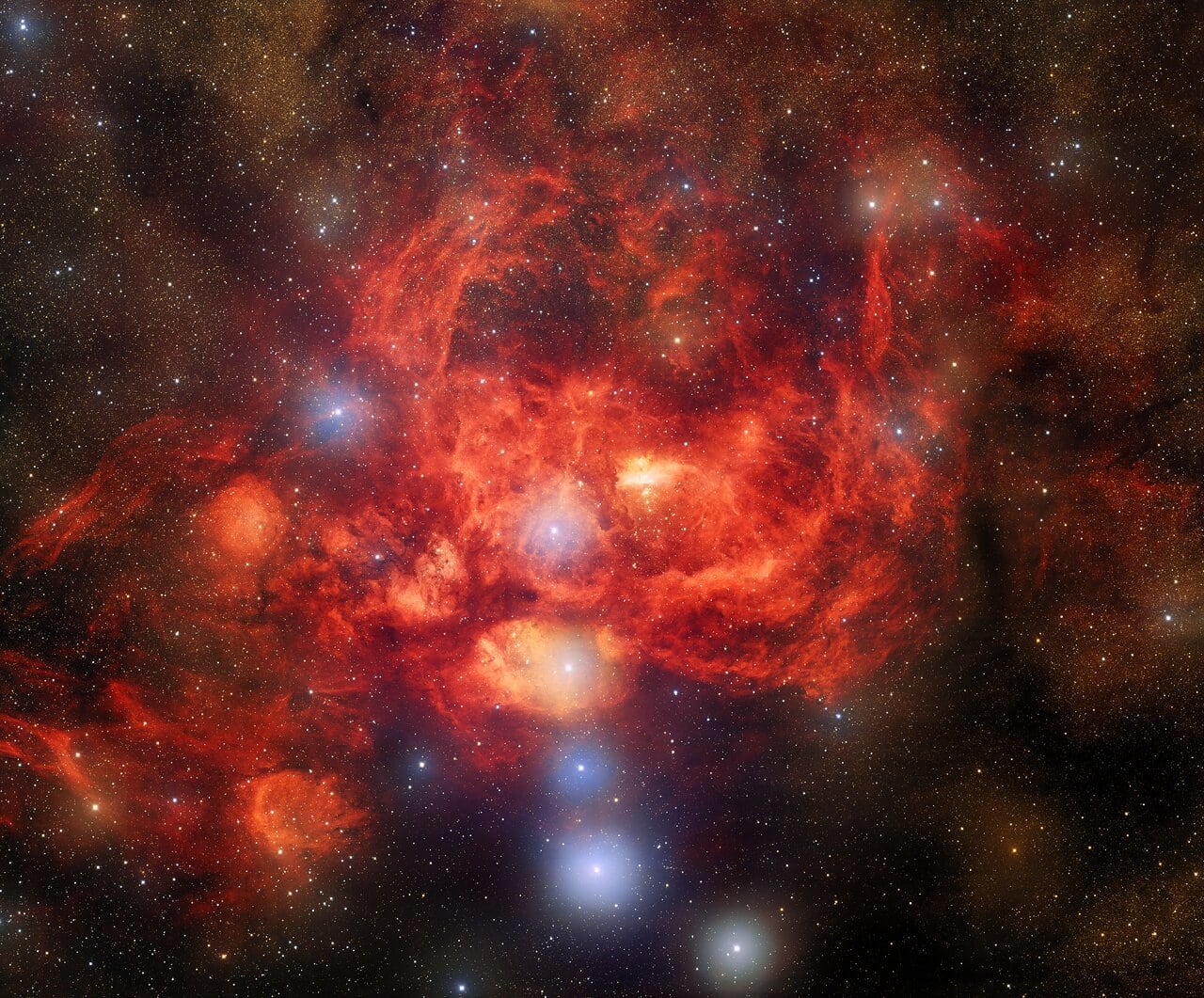In honor of its tenth anniversary, the National Research Laboratory of Optical Infrared Astronomy (NOIRLab) has published a stunning image of the Lobster nebula (NGC 6357). This is a brilliant region of star formation, located 8 thousand light-years from Earth in the constellation of Scorpius.

The anniversary photo was taken by a 570-megapixel Dark Energy Camera (DECam), which is installed on the 4-meter Víctor M. Blanco telescope at the Cerro Tololo Observatory in Chile. This is one of the most efficient wide-area cameras in the world.
One of the most impressive things about this image is the well-detailed color palette chosen to highlight various aspects of the nebula. This high-resolution image demonstrates the power of DECam and its ability to produce stunning images, helping astronomers study the fundamental properties of the universe.
How was the photo taken?
To create such a colorful image, the celestial object is shot several times using various filters. Each observation provides a single-color image covering a certain range of light waves. Then visualization specialists take individual images and assign the appropriate color to each of them. The images can then be superimposed on each other to create a composition that is roughly similar to if a human eye were looking at them.
At the center of the nebula, spanning about 400 light–years, is the open star cluster Pismis 24 – a collection of dazzlingly bright, massive stars. Around this cluster is an area filled with newborn stars, protostars still in the star-forming material. Sinuous braids of dark clouds and complex structures inside the nebula are formed by the violent pressure of interstellar winds, radiation and powerful magnetic fields.
The image was presented at the conference “DECam at 10 years: Looking Back, Looking Forward”. The photo highlighted the outstanding scientific results of DECam over the past 10 years and the fascinating possibilities of DECam. Moreover, DECam has overcome a certain milestone with this image – one million frames (from 400 to 500 images per night) are captured.
According to TechExplorist
Follow us on Twitter to get the most interesting space news in time
https://twitter.com/ust_magazine

